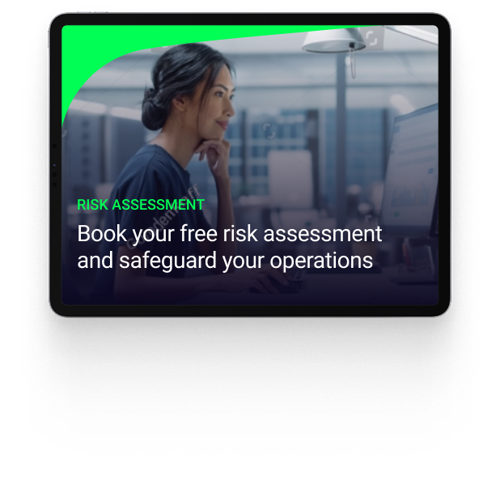Picture this: your fleet’s prepped, passengers are queueing, the weather’s finally playing nice — and then, at 03:00 UTC, a critical third-party software platform goes dark. No check-ins. No boarding. No passenger updates.
Welcome to one of the biggest modern threats to airline operations: vendor failure.
Airlines run on software. Not just for convenience — for continuity. From reservations to maintenance logs, flight planning to crew rosters, your digital ecosystem is as mission-critical as jet fuel. And much of it? Outsourced.
Third-party vendors provide the backbone for everything from flight operations and PSS platforms to maintenance tracking and revenue management. But what happens when one of them goes down, disappears, or quietly changes priorities?
You don’t just lose access. You lose time, money, compliance footing — and in some cases, passenger trust.

BOOK NOW
Our Software Risk Assessment will identify any vulnerabilities within your software supply chain. Book your free Software Risk Assessment today to safeguard your operations.
We’ve seen it play out: an unplanned outage in a reservation system creates airport chaos. A broken maintenance log delays multiple aircraft. A crew management glitch triggers rota misalignments that ripple across continents.
Vendor failure isn’t theoretical. It’s happening — and the impact isn’t limited to IT departments. The consequences are operational, commercial, regulatory, and reputational.
Vendor failure risks go deeper:
It’s not about assuming the worst. It’s about being ready for anything.
Think back to the 2023 vendor outage that left multiple airlines grounded. Not because their internal systems failed — but because they relied on a shared third-party provider.
You might have best-in-class engineers, resilient systems, and clear escalation routes. But if your vendor holds the keys to your mission-critical software and decides (or is forced) to walk away — you’re left standing at the gate.
Software escrow is a simple but powerful idea. You place the vendor’s source code, documentation, and deployment materials into a secure, neutral account. If something happens — vendor insolvency, acquisition, catastrophic failure — you can access what you need to keep your operations running.
Done right, escrow creates a win-win:
It’s the operational insurance policy that isn’t an insurance policy — it’s access, control, and clarity, when you need it most.
Now, escrow is step one. But let’s be honest: unverified escrow is like buying a spare engine and never checking if it fits your aircraft.
That’s where source code verification comes in.
Verification ensures that what’s in escrow isn’t just present, but usable. It confirms:
In other words, it’s not just sitting in a vault — it’s ready to go if you ever need it.
And for risk directors? That’s gold. You’re not just hedging your bets — you’re giving your teams something they can actually work with in a crisis.
Let’s put this in context. Say your vendor provides a custom crew rostering system. It’s deeply integrated, tightly configured — and utterly critical.
Now imagine that vendor gets acquired, and the product roadmap is shelved. No support. No updates. Just a slow drift into obsolescence.
With escrow and verification in place, you have options:
It’s not about clinging to the past — it’s about owning your continuity.
Building a practical plan for vendor failure doesn’t need to be a 60-slide workshop. It just needs four things:
Here’s the thing: when vendor failure hits, it’s people who carry the weight. Ground staff handling angry passengers. Ops teams chasing support lines. Comms trying to salvage the brand.
Risk strategy isn’t just about frameworks and fallback clauses. It’s about protecting your people from panic, your passengers from chaos, and your business from brand damage.
When you embed tools like software escrow and verification into your continuity toolkit, you’re not just checking boxes — you’re showing your teams that you’ve thought this through.
Vendor failure isn’t a hypothetical anymore. It’s real, it’s rising, and it’s risky in all the wrong places.
But that doesn’t mean you have to sit and hope your critical vendors don’t stumble. It means getting proactive. It means putting agreements in place that work for the worst day — not just the best one.
And yes, it means investing in mechanisms like software escrow and source code verification — not because you expect failure, but because you plan for it.
Our Software Risk Assessment will identify any vulnerabilities within your software supply chain. Book your free Software Risk Assessment today to safeguard your operations and reputation!

By submitting this form you consent to receive correspondence from NCC Group. We will not sell your personal information. You can unsubscribe at any time. Privacy Policy.